1-bromo-2,2-dimethoxypropane
Modify Date: 2024-01-05 23:08:22

1-bromo-2,2-dimethoxypropane structure
|
Common Name | 1-bromo-2,2-dimethoxypropane | ||
|---|---|---|---|---|
| CAS Number | 126-38-5 | Molecular Weight | 183.044 | |
| Density | 1.3±0.1 g/cm3 | Boiling Point | 154.4±0.0 °C at 760 mmHg | |
| Molecular Formula | C5H11BrO2 | Melting Point | N/A | |
| MSDS | Chinese USA | Flash Point | 40.6±0.0 °C | |
| Symbol |


GHS02, GHS07 |
Signal Word | Warning | |
| Name | 1-bromo-2,2-dimethoxypropane |
|---|---|
| Synonym | More Synonyms |
| Density | 1.3±0.1 g/cm3 |
|---|---|
| Boiling Point | 154.4±0.0 °C at 760 mmHg |
| Molecular Formula | C5H11BrO2 |
| Molecular Weight | 183.044 |
| Flash Point | 40.6±0.0 °C |
| Exact Mass | 181.994232 |
| PSA | 18.46000 |
| LogP | 1.46 |
| Vapour Pressure | 4.1±0.2 mmHg at 25°C |
| Index of Refraction | 1.444 |
| Storage condition | Flammables area |
Synonym:Bromoacetone dimethyl keta Section 2 - COMPOSITION, INFORMATION ON INGREDIENTS
Risk Phrases: 10 36/37/38 Section 3 - HAZARDS IDENTIFICATION EMERGENCY OVERVIEW
Flammable. Irritating to eyes, respiratory system and skin.Lachrymator (substance which increases the flow of tears). Potential Health Effects Eye: Causes eye irritation. Lachrymator (substance which increases the flow of tears). May cause chemical conjunctivitis and corneal damage. Skin: Causes skin irritation. May cause dermatitis. May cause cyanosis of the extremities. Ingestion: May cause gastrointestinal irritation with nausea, vomiting and diarrhea. Ingestion of large amounts may cause CNS depression. Inhalation: Causes respiratory tract irritation. Aspiration may lead to pulmonary edema. Vapors may cause dizziness or suffocation. May cause burning sensation, coughing, wheezing, laryngitis, shortness of breath, headache, nausea, and vomiting. Chronic: Effects may be delayed. Section 4 - FIRST AID MEASURES Eyes: Immediately flush eyes with plenty of water for at least 15 minutes, occasionally lifting the upper and lower eyelids. Get medical aid immediately. Do NOT allow victim to rub eyes or keep eyes closed. Skin: Get medical aid immediately. Immediately flush skin with plenty of water for at least 15 minutes while removing contaminated clothing and shoes. Wash clothing before reuse. Ingestion: Never give anything by mouth to an unconscious person. Get medical aid immediately. Do NOT induce vomiting. If conscious and alert, rinse mouth and drink 2-4 cupfuls of milk or water. Inhalation: Get medical aid immediately. Remove from exposure and move to fresh air immediately. If not breathing, give artificial respiration. If breathing is difficult, give oxygen. Notes to Physician: Treat symptomatically and supportively. Section 5 - FIRE FIGHTING MEASURES General Information: As in any fire, wear a self-contained breathing apparatus in pressure-demand, MSHA/NIOSH (approved or equivalent), and full protective gear. Vapors may form an explosive mixture with air. Vapors can travel to a source of ignition and flash back. During a fire, irritating and highly toxic gases may be generated by thermal decomposition or combustion. Will burn if involved in a fire. Use water spray to keep fire-exposed containers cool. Containers may explode in the heat of a fire. Flammable liquid and vapor. Vapors may be heavier than air. They can spread along the ground and collect in low or confined areas. Extinguishing Media: Use water spray to cool fire-exposed containers. Water may be ineffective. Do NOT use straight streams of water. In case of fire, use carbon dioxide, dry chemical powder or appropriate foam. Section 6 - ACCIDENTAL RELEASE MEASURES General Information: Use proper personal protective equipment as indicated in Section 8. Spills/Leaks: Clean up spills immediately, observing precautions in the Protective Equipment section. Cover with sand, dry lime or soda ash and place in a closed container for disposal. Remove all sources of ignition. Use a spark-proof tool. Provide ventilation. A vapor suppressing foam may be used to reduce vapors. Section 7 - HANDLING and STORAGE Handling: Use only in a well-ventilated area. Ground and bond containers when transferring material. Use spark-proof tools and explosion proof equipment. Avoid contact with eyes, skin, and clothing. Empty containers retain product residue, (liquid and/or vapor), and can be dangerous. Keep container tightly closed. Keep away from heat, sparks and flame. Avoid ingestion and inhalation. Use only in a chemical fume hood. Wash clothing before reuse. Do not pressurize, cut, weld, braze, solder, drill, grind, or expose empty containers to heat, sparks or open flames. Do not breathe vapor. Storage: Keep away from heat, sparks, and flame. Store in a tightly closed container. Store in a cool, dry, well-ventilated area away from incompatible substances. Flammables-area. Section 8 - EXPOSURE CONTROLS, PERSONAL PROTECTION Engineering Controls: Facilities storing or utilizing this material should be equipped with an eyewash facility and a safety shower. Use adequate general or local explosion-proof ventilation to keep airborne levels to acceptable levels. Exposure Limits CAS# 126-38-5: Personal Protective Equipment Eyes: Wear appropriate protective eyeglasses or chemical safety goggles as described by OSHA's eye and face protection regulations in 29 CFR 1910.133 or European Standard EN166. Skin: Wear appropriate protective gloves to prevent skin exposure. Clothing: Wear appropriate protective clothing to prevent skin exposure. Respirators: A respiratory protection program that meets OSHA's 29 CFR 1910.134 and ANSI Z88.2 requirements or European Standard EN 149 must be followed whenever workplace conditions warrant respirator use. Section 9 - PHYSICAL AND CHEMICAL PROPERTIES Physical State: Clear liquid Color: clear light yellow Odor: None reported. pH: Not available. Vapor Pressure: Not available. Viscosity: Not available. Boiling Point: 83.0 - 87.0 deg C @ 80.00mmHg Freezing/Melting Point: Not available. Autoignition Temperature: Not applicable. Flash Point: 40 deg C ( 104.00 deg F) Explosion Limits, lower: Not available. Explosion Limits, upper: Not available. Decomposition Temperature: Not available. Solubility in water: Not available. Specific Gravity/Density: 1.3550g/cm3 Molecular Formula: C5H11BrO2 Molecular Weight: 183.04 Section 10 - STABILITY AND REACTIVITY Chemical Stability: Stable at room temperature in closed containers under normal storage and handling conditions. Conditions to Avoid: Incompatible materials, ignition sources, excess heat, strong oxidants. Incompatibilities with Other Materials: Strong oxidizing agents. Hazardous Decomposition Products: Carbon monoxide, carbon dioxide, hydrogen bromide. Hazardous Polymerization: Has not been reported. Section 11 - TOXICOLOGICAL INFORMATION RTECS#: CAS# 126-38-5 unlisted. LD50/LC50: Not available. Carcinogenicity: 1-Bromo-2,2-dimethoxypropane - Not listed by ACGIH, IARC, or NTP. Section 12 - ECOLOGICAL INFORMATION Other No information available. Section 13 - DISPOSAL CONSIDERATIONS Dispose of in a manner consistent with federal, state, and local regulations. Section 14 - TRANSPORT INFORMATION IATA Shipping Name: FLAMMABLE LIQUID, N.O.S.* Hazard Class: 3 UN Number: 1993 Packing Group: III IMO Shipping Name: FLAMMABLE LIQUID, N.O.S. Hazard Class: 3.3 UN Number: 1993 Packing Group: III RID/ADR Shipping Name: FLAMMABLE LIQUID, N.O.S. Hazard Class: 3 UN Number: 1993 Packing group: III Section 15 - REGULATORY INFORMATION European/International Regulations European Labeling in Accordance with EC Directives Hazard Symbols: XI Risk Phrases: R 10 Flammable. R 36/37/38 Irritating to eyes, respiratory system and skin. Safety Phrases: S 16 Keep away from sources of ignition - No smoking. S 26 In case of contact with eyes, rinse immediately with plenty of water and seek medical advice. S 28A After contact with skin, wash immediately with plenty of water. WGK (Water Danger/Protection) CAS# 126-38-5: No information available. Canada None of the chemicals in this product are listed on the DSL/NDSL list. CAS# 126-38-5 is not listed on Canada's Ingredient Disclosure List. US FEDERAL TSCA CAS# 126-38-5 is not listed on the TSCA inventory. It is for research and development use only. SECTION 16 - ADDITIONAL INFORMATION N/A |
| Symbol |


GHS02, GHS07 |
|---|---|
| Signal Word | Warning |
| Hazard Statements | H226-H315-H319-H335 |
| Precautionary Statements | P261-P305 + P351 + P338 |
| Personal Protective Equipment | Eyeshields;Faceshields;full-face respirator (US);Gloves;multi-purpose combination respirator cartridge (US);type ABEK (EN14387) respirator filter |
| Hazard Codes | Xi:Irritant; |
| Risk Phrases | R10;R36/37/38 |
| Safety Phrases | S16-S26-S28 |
| RIDADR | UN 1993 3/PG 3 |
| WGK Germany | 3 |
| Packaging Group | III |
| HS Code | 2911000000 |
|
~% 
1-bromo-2,2-dim... CAS#:126-38-5 |
| Literature: Journal of Organic Chemistry, , vol. 37, # 4 p. 611 - 617 |
|
~% 
1-bromo-2,2-dim... CAS#:126-38-5 |
| Literature: Tetrahedron Letters, , p. 4055 - 4058 |
|
~% 
1-bromo-2,2-dim... CAS#:126-38-5 |
| Literature: Synthetic Communications, , vol. 10, # 11 p. 821 - 826 |
| HS Code | 2911000000 |
|---|---|
| Summary | 2911000000 acetals and hemiacetals, whether or not with other oxygen function, and their halogenated, sulphonated, nitrated or nitrosated derivatives。Supervision conditions:None。VAT:17.0%。Tax rebate rate:9.0%。MFN tariff:5.5%。General tariff:30.0% |
|
Gram scale synthesis of Benzo [ghi] perylene and coronene. Van Dijk JTM, et al.
J. Org. Chem. 61(3) , 1136-39, (1996)
|
|
|
Synthesis of Dicarbonyl (η5-Cyclopentadienyl)(η′-2-Methoxyallyl) iron. Abram TS and Baker R.
Synth. React. Inorg. Met.-Org. Chem. 9(5) , 471-77, (1979)
|
| 1-bromo-2,2-dimethoxypropan |
| MFCD00000208 |
| 2,2-dimethoxybromopropane |
| Propane,1-bromo-2,2-dimethoxy |
| Propane, 1-bromo-2,2-dimethoxy- |
| 2,2-dimethoxy-3-bromo-propane |
| 1-BROMO-2,2-DIMETHOXYPROPANE |
| 1-bromo-2,2-dimethoxy-propane |
| bromoacetone dimethyl acetal |
| EINECS 204-784-7 |
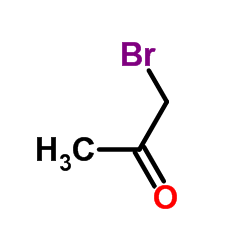
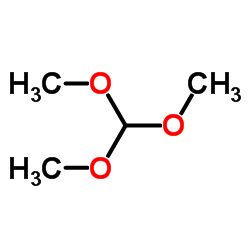
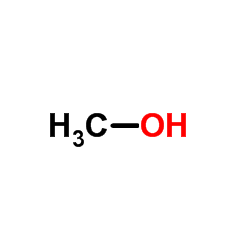
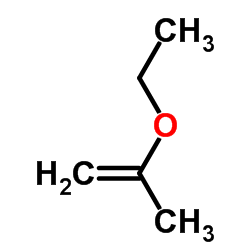
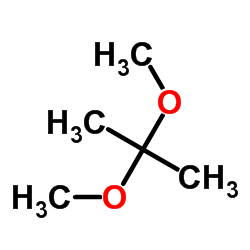
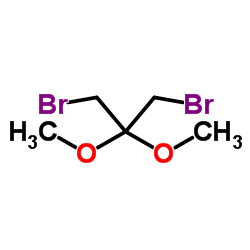
![8-Chloro-2-methylimidazo[1,2-a]pyrazine structure](https://www.chemsrc.com/caspic/160/85333-43-3.png) CAS#:85333-43-3
CAS#:85333-43-3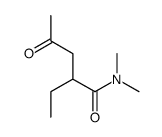 CAS#:62359-07-3
CAS#:62359-07-3
